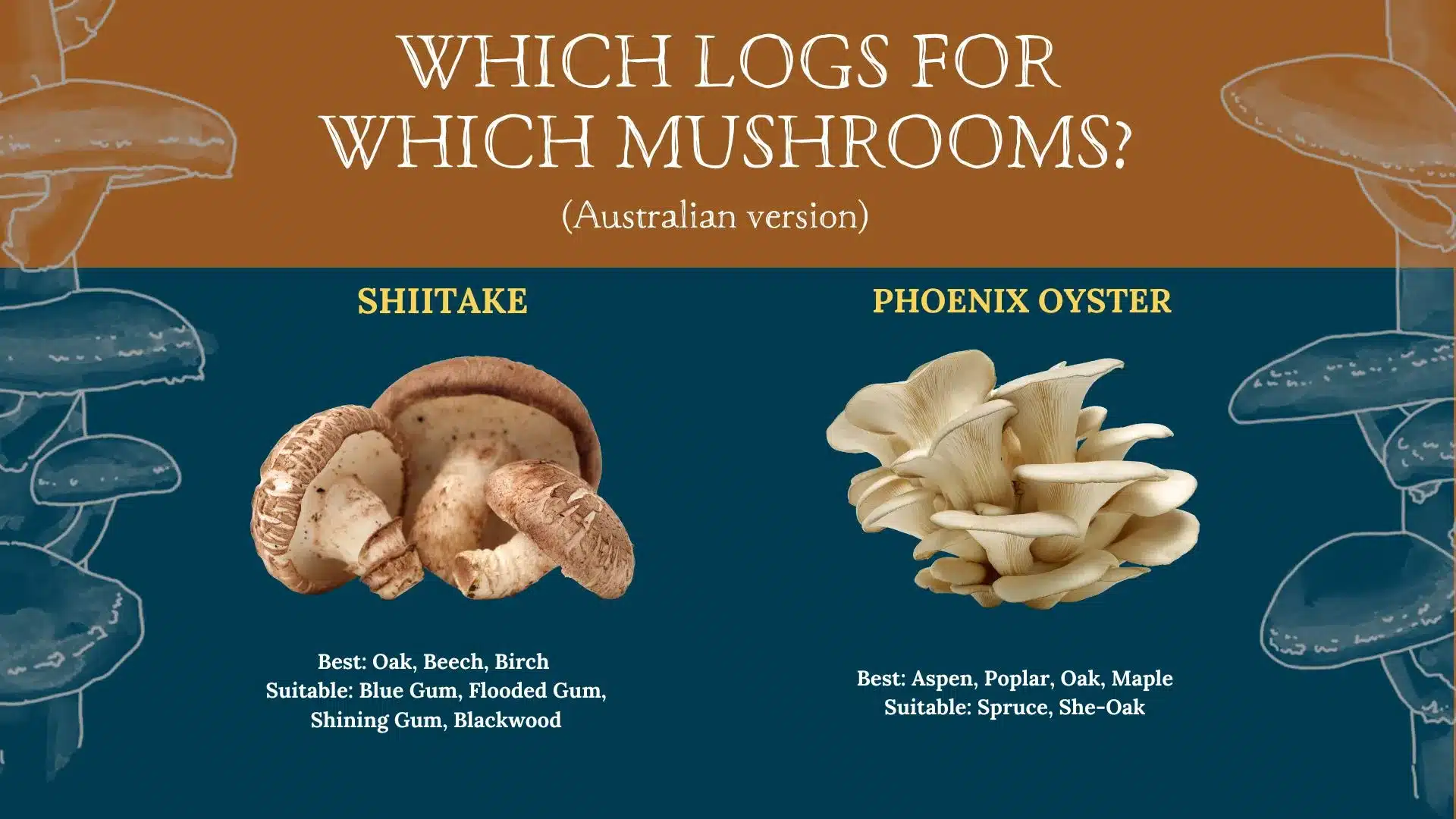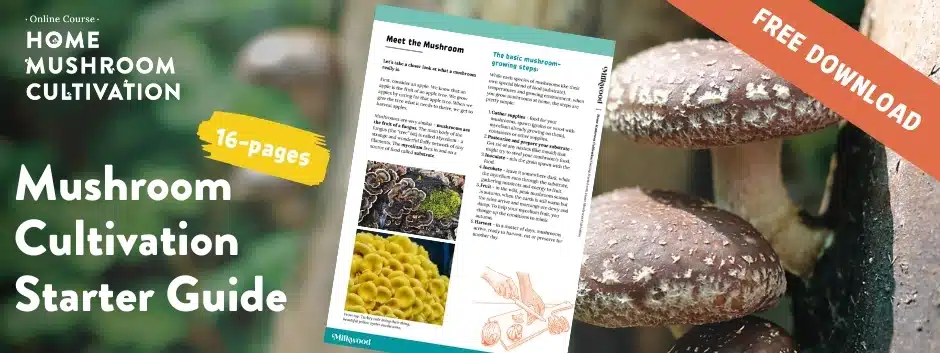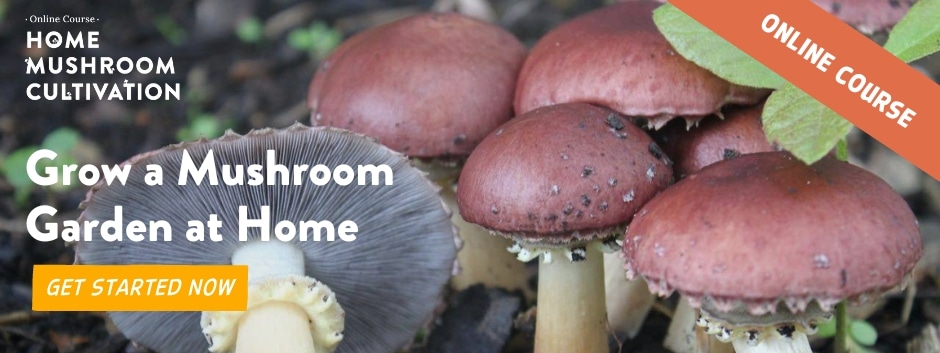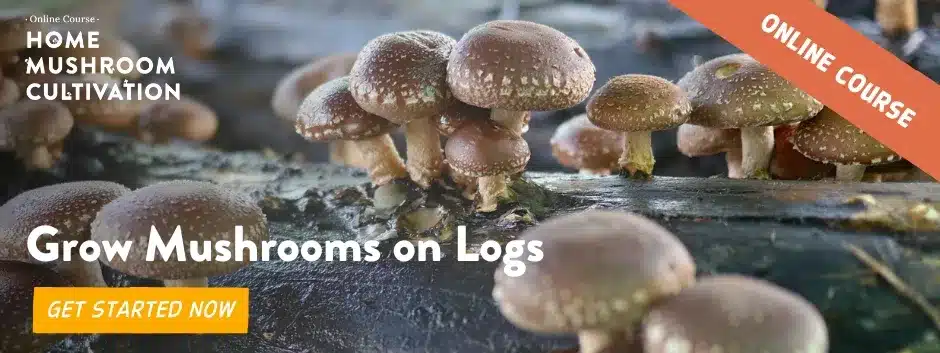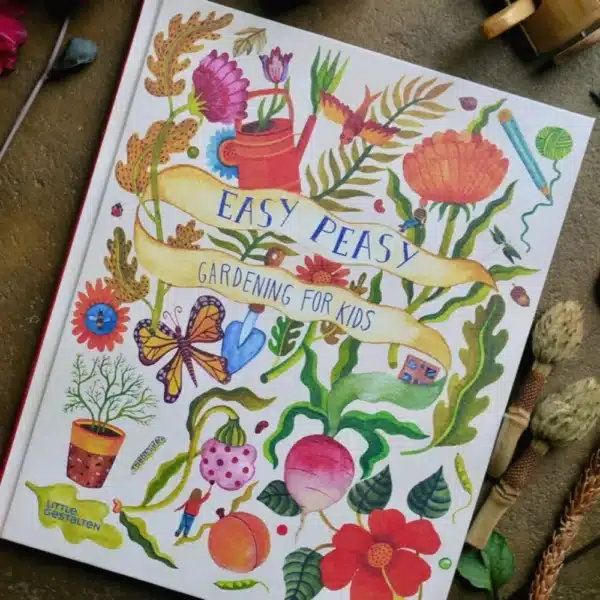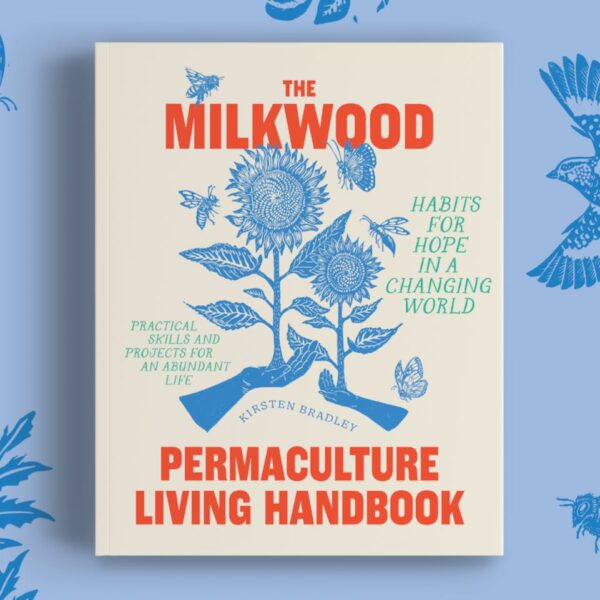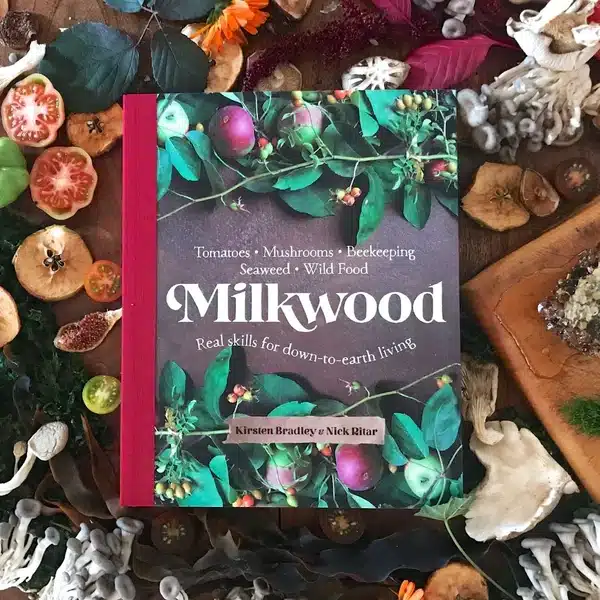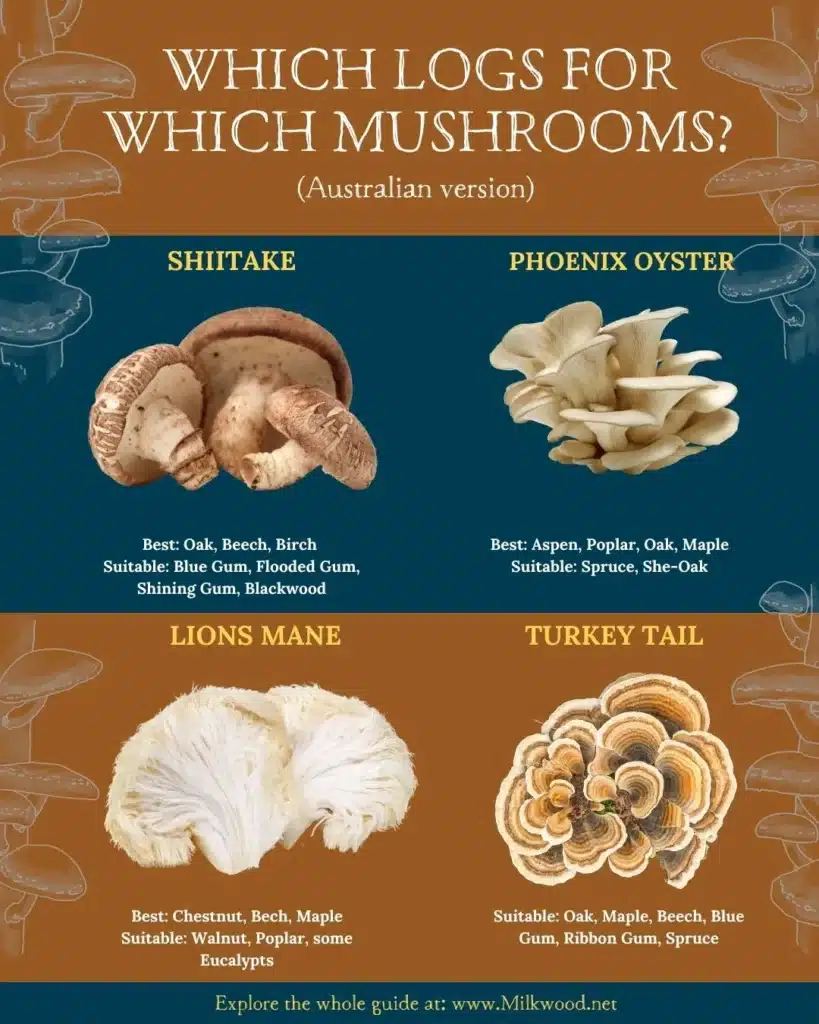
Thinking about growing mushrooms on logs at home? Choosing the right kind of wood is one of the most important steps - especially if you’re working with native Australian species.
While mushrooms like shiitake and oyster are traditionally grown on oaks, willows, and poplars in their countries of origin, many Australian hardwoods can work well too.
So we’ve made you a guide - and a compatibility chart - to help you choose the best log species for mushroom cultivation in Australian conditions.
Whether you’re growing shiitake, reishi, lion’s mane or oyster mushrooms, we’ll show you which native trees have been trialled successfully, how to prepare your logs, and what to expect from the process.
If you’re ready to get growing with what’s already in your backyard or nearby, read on - your mushroom logs await…
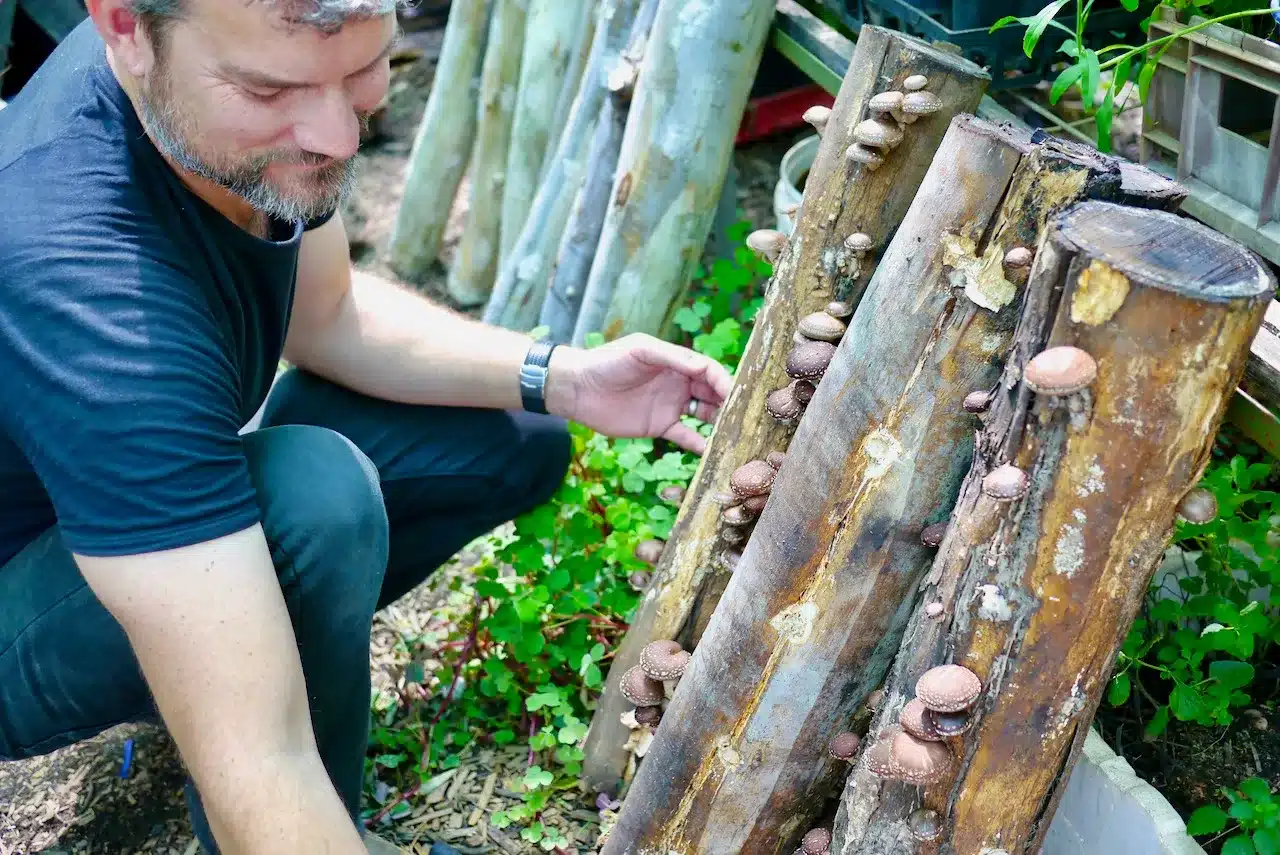
A practical guide to growing mushrooms on logs in Australia
The conventional wisdom is that Shiitake mushrooms love oak logs and Oyster mushrooms thrive on willow and poplar.
So if you’ve got those trees growing near you and you can source some logs - brilliant. Start there.
But for the rest of us, especially those gardening and growing in Australia, there’s good news:
Several Australian native hardwoods have proven to be excellent hosts for backyard mushroom cultivation, too.
Through trials (and plenty of experiments), we now know that many eucalypts - and some wattles and even she-oaks - can produce beautiful crops of shiitake, lion’s mane, oysters, turkey tails and reishi, with a bit of care and the right preparation.
From stringybarks to blue gums to backyard acacias, the diversity of tree species here in so-called Australia is incredible. But not all wood is created equal, when it comes to what gourmet and medicinal mushrooms like to eat. Some trees support abundant harvests. Others… not so much.
This guide can help you figure out which logs are likely to work best - especially for shiitake, oysters, lion’s mane, reishi and turkey tail mushrooms.
We’ve compiled all the research we could find, our own experiments, and contributions from other growers to make the most comprehensive chart that we could of “Which mushrooms grow on which logs” (with sources).
This chart gives you a place to start, using what’s already growing near you.
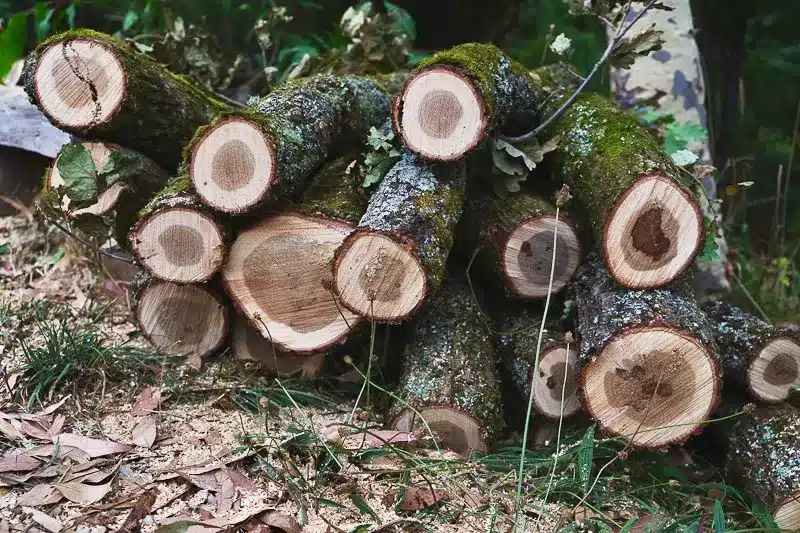
So Many Trees, So Many Possibilities
Here in Australia, we’ve got a lot of tree species to work with. The term eucalypt alone covers around 800 different species, across the genera Eucalyptus, Corymbia and Angophora. Almost all of them are native to this continent.
>> More on Eucalypts
Then there’s Acacia - with over 1,350 species worldwide, and nearly 1,000 found right here in Australia.
>> More on Acacias
Why dont folks just get some random logs, drill ’em up and see how they go? Well, as anyone who has done some log cultivating knows…. going through the process of log cultivation, then waiting 6-18 months, only to find that your shiitake spawn and that log type really don’t jam – is not a great feeling.
No surprise, then, that there’s so much interest in figuring out which Australian species of tree DO work well for mushroom logs. The catch? Most Australian tree species haven’t been properly trialled for log-based gourmet mushroom growing. Not yet, anyway.
But a handful of species HAVE - by us, by other growers, and maybe by you too. (Let us know in the comments so we can update our chart!)
And this shared knowledge helps us all build a more informed picture of which trees are promising.
How we’ve made this chart:
We’ve included all the data we can find on using Australian natives trees, as well as the most common non-native trees that these mushrooms love.
Now you may not have the exact tree species we have listed growing in abundance near you – but do compare what trees you have growing with the species we have listed in the chart.
Then, based on how closely they are related (are they in the same family?) and their physical properties (wood density, bark type, etc) you should be able to take an educated guess at which mushroom species will work with the trees that you have available.
They key to creating a habit of growing mushrooms on logs is to figure out how to use whatever suitable tree species you can source nearby. And then review, learn, adapt, and do it again, next year. Experiments welcome, always.
Growing Mushrooms on Logs in Australia – The Chart:
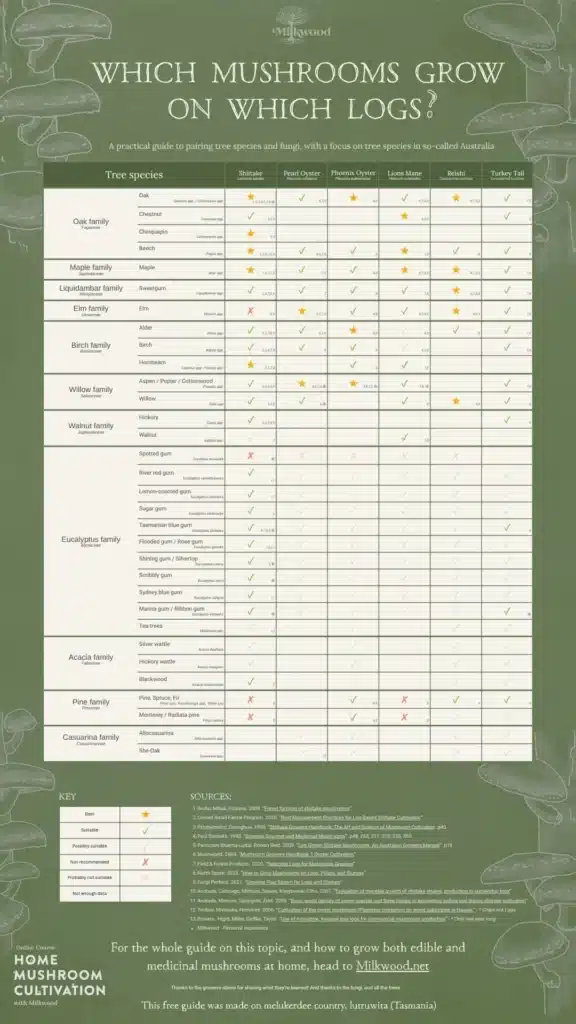
What Makes a Good Mushroom Log?
Once you have a suitable tree species sorted, there’s some basic rules of thumb. The best mushroom logs tend to have a few things in common:
- They’re freshly cut
Logs from healthy living trees, cut recently, offer more sugars and nutrients for the fungi to feed on and are less likely to already be inhabited by other fungi. In this case competition is bad. If you can’t inoculate right away, store logs out of sun and off thee ground, and keep them moist. Try to inoculate within 2–3 weeks of cutting. - They’ve got a thick band of sapwood
This outer ring of wood is rich in carbohydrates - the stuff your mycelium loves. You’ll find more sapwood in younger, healthy trees that grew quickly on good soil. - Their bark stays put
Bark acts like a blanket for your mushroom log. It holds in moisture, protects against competing fungi, and creates a safe space for baby mushrooms (primordia) to form. Logs with thin but persistent bark tend to work best. - They’re manageable in size
Bigger logs last longer, but smaller ones are easier to handle, and fruit more quickly. We aim for logs about 1 to 1.2 metres long, and 10 to 20 cm in diameter - big enough to crop well, small enough to move easily and safely.
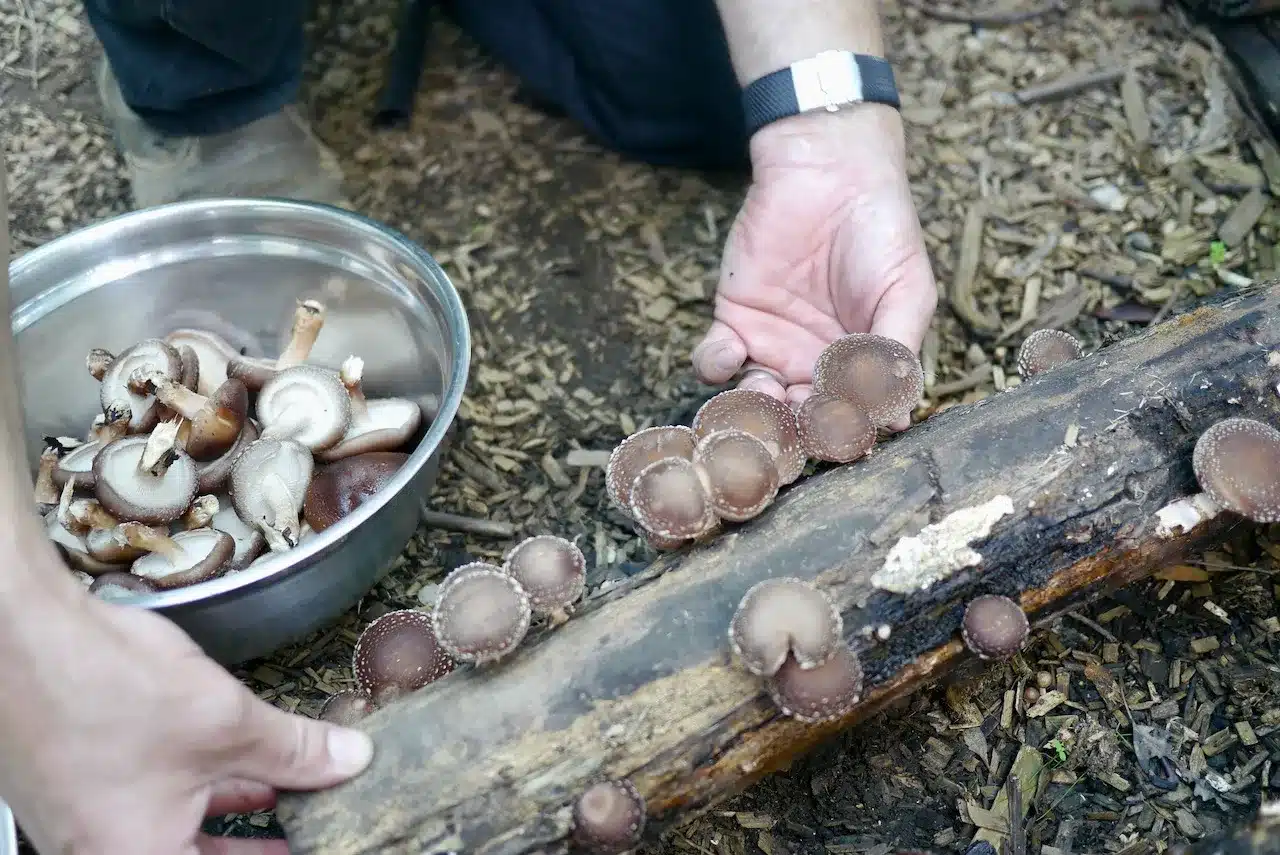
Which Australian Logs Are Best for Shiitake?
According to the latest field trials and sources, shiitake mushrooms have grown successfully on these Australian species:
- Sugar gum (E. cladocalyx)
- Tasmanian blue gum (E. globulus)
- Rose gum (E. grandis)
- Shining gum (E. nitens)
- Scribbly gum (E. rossi)
- Sydney blue gum (E. saligna)
- Ribbon gum (E. viminalis)
Also trialled with some success:
- Blackwood (Acacia melanoxylon)
And possibly even tea trees (Melaleuca spp.) but we’d love to see some more experiments before committing too much to this one.
These species vary in bark type, density, and speed of colonisation - but all have shown compatibility in trials. Rest your logs 1–2 weeks after cutting, then inoculate for best results.
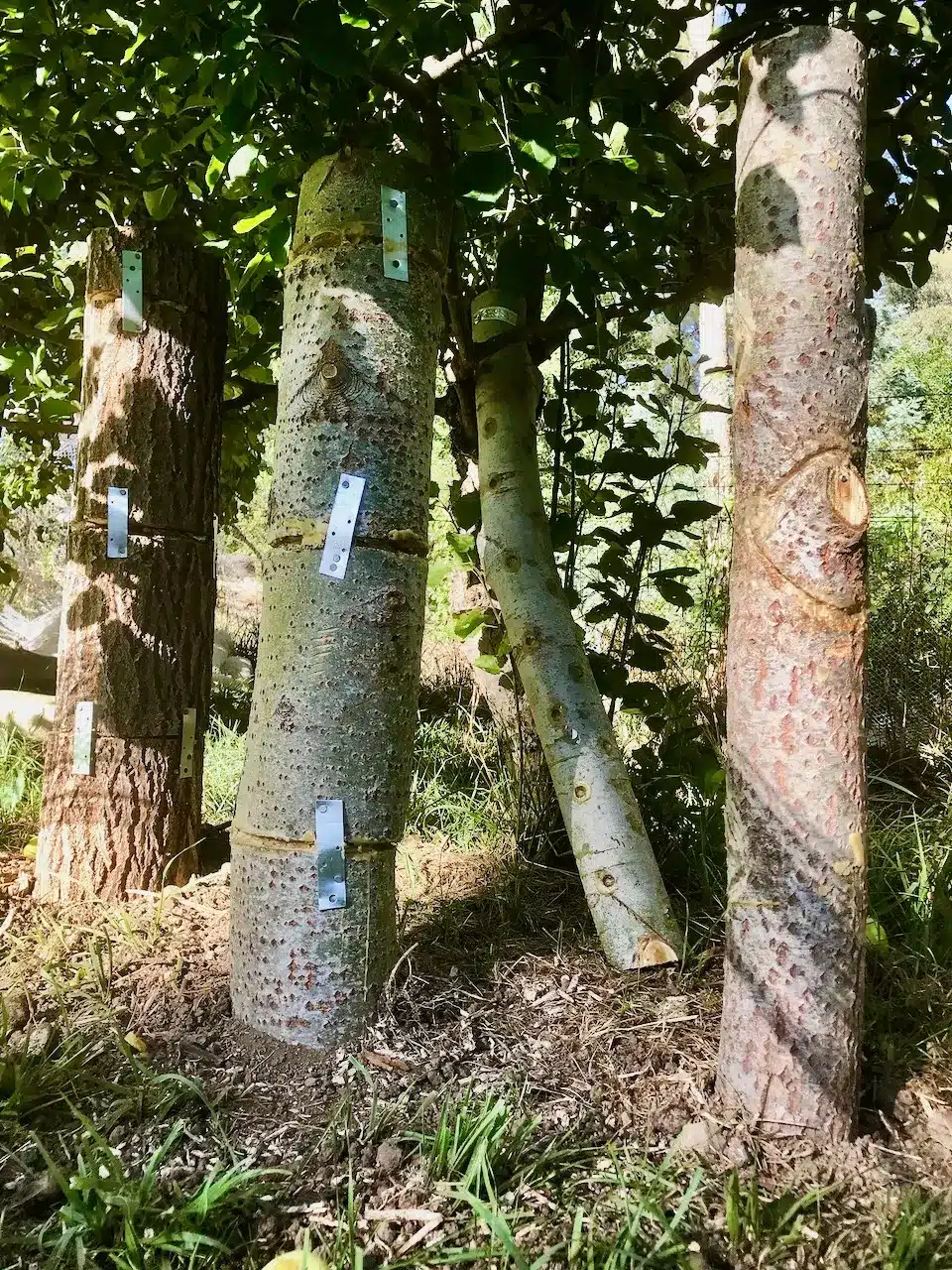
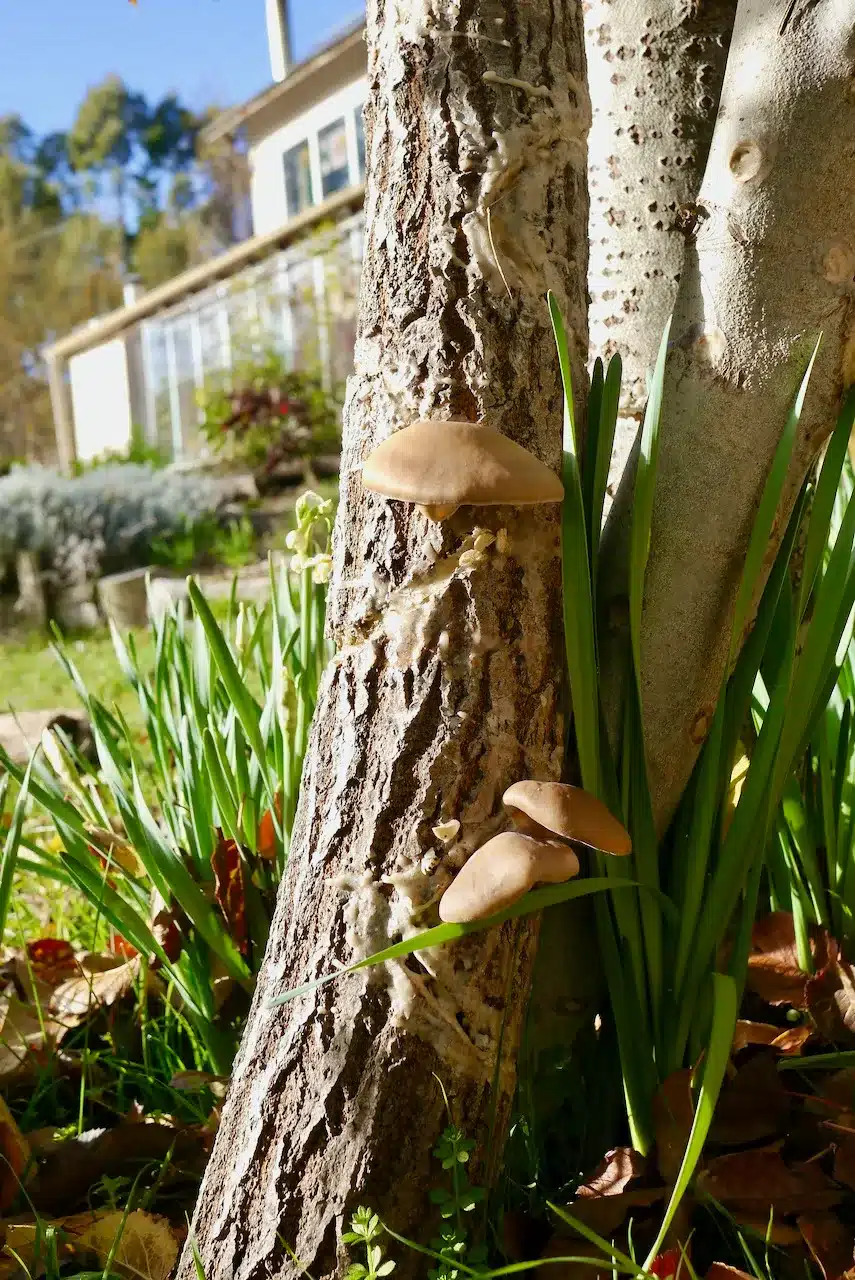
What About Other Mushrooms?
Oyster Mushrooms (Pleurotus spp.)
Pearl Oysters (Pleurotus ostreatus) will probably work on the eucalyptus species listed above and maybe Casuarina & Allocasuarina spp.
Phoenix Oysters (Pleurotus pulmonarius) are even more adaptable and can be cultivated on pines and maybe even tea-trees (Melaleuca spp.)
Oysters are quick colonisers and reliable producers. A great choice for beginners.
On top of that we have suggestions for tree species to grow some of our other favourite edible and medicinal fungi including Lion’s Mane (Hericium coralloides) Reishi (Ganoderma lucidum) and Turkey Tail (Trametes versicolor). It’s all in the chart.
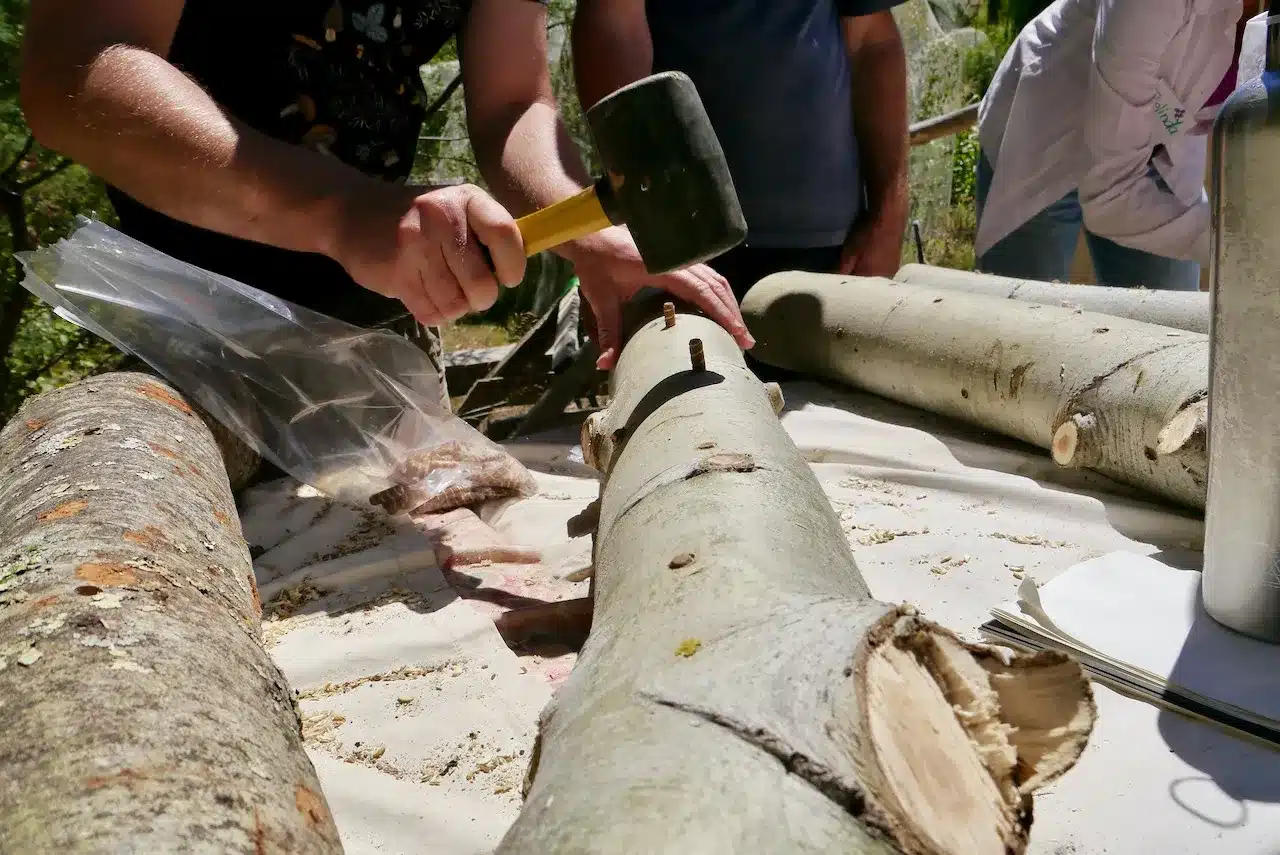
What’s Not in the Chart?
The above chart sticks to common-to-Australian tree species that we have data for, as being suitable (or not) for the most common edible and medicinal mushrooms. Why? Because there are just WAY too many tree species to list them all and our focus here is on what’s been tested and recorded.
So you won’t see Palm species in there, or famously durable Australian hardwoods like Red Box, or strongly-scented woods like Camphor Laurel. This doesn’t mean that many other Australian logs cannot be used – but here’s what we know so far.
We encourage you to keep experimenting, and let us know what you learn…
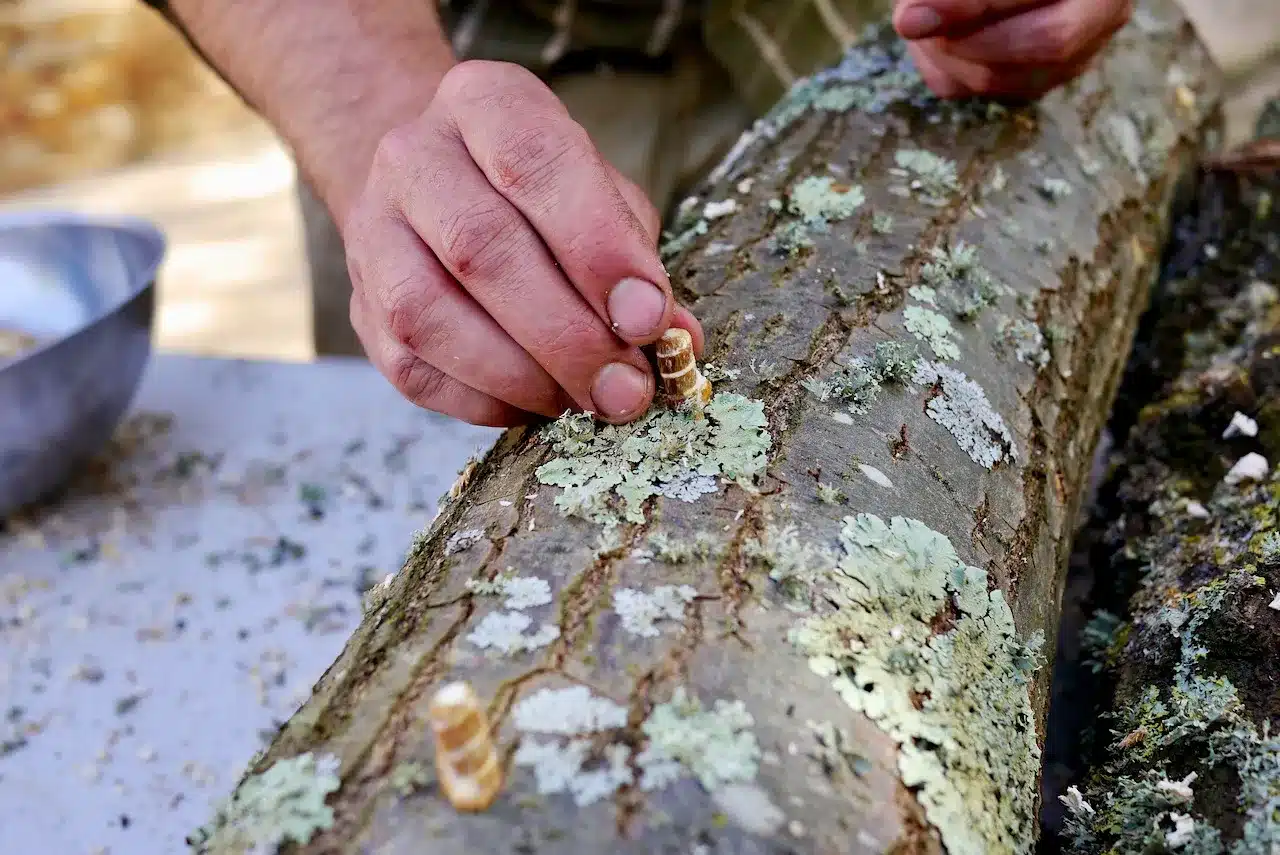
Tips for Getting Started
- Cut live logs in late winter
- Let logs rest 1–2 weeks, then inoculate
- Keep logs shaded and damp while colonising (6–18 months)
- Logs may fruit for 3–7 years, depending on species and care
- See our full guide to Log Cultivation Basics here, and our summer log cultivation tips here.
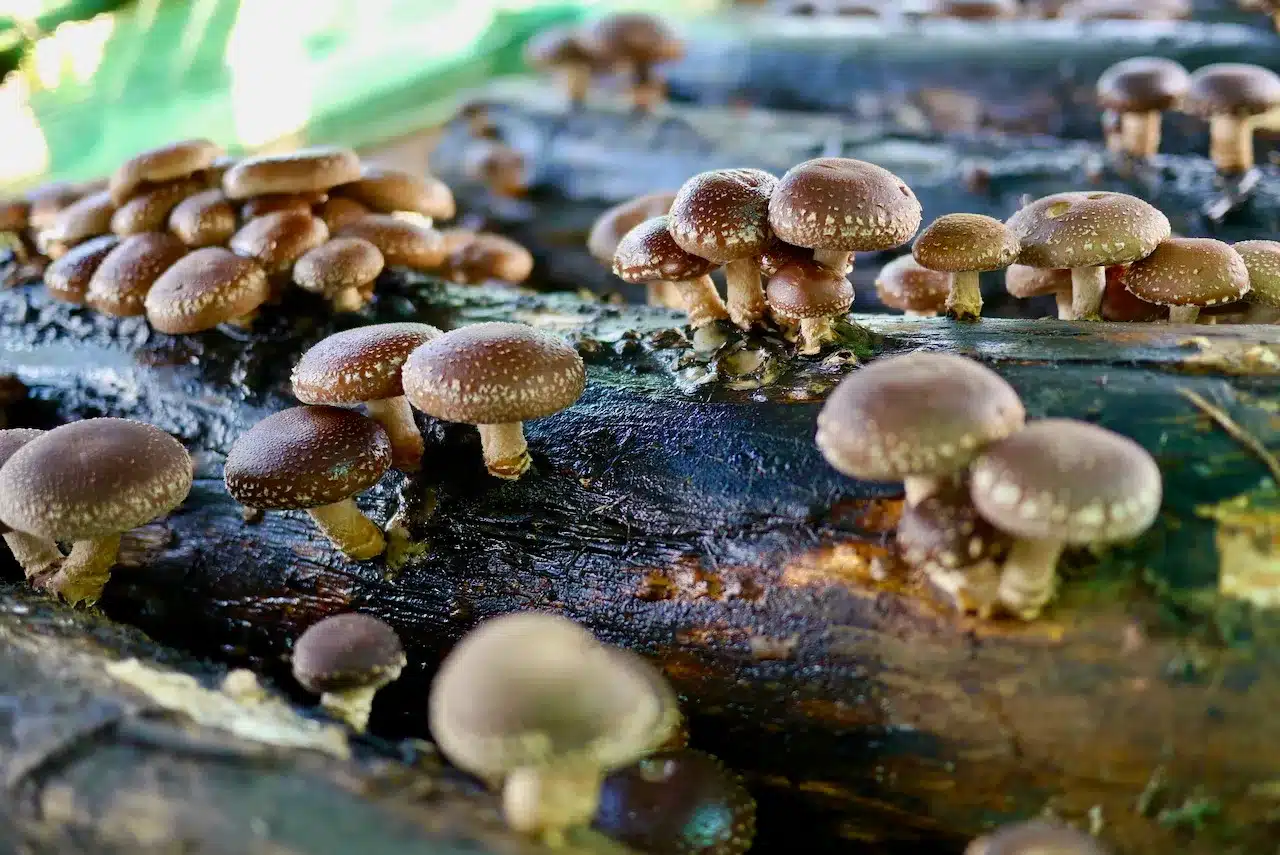
Growing mushrooms = growing your relationship with ecosystem
Working with different tree species to grow mushrooms on their logs isn’t just about food and medicine - though the harvests are generous and delicious.
It’s also a way to slow down and tune in. To notice which trees are growing around you. To learn their bark, their growth patterns, their relationship with the soil, and the other life around them.
Cultivating mushrooms on the wood we have available to us helps us create more resilient communities, and local food systems. And it helps us understand our ecosystems more deeply - one log, one season at a time.
So whether you’re working with a known favourite like oak, or experimenting with ribbon gum or silver wattle, you’re taking part in something fundamental, and collaborative. Fungi, trees, people - all doing their quiet and important work, together.
Let us know what species you’ve tried, and what’s worked for you?
Here’s to good logs, good fungi, and many future harvests.
Keep Exploring…
- How to Grow Mushrooms on Logs – Video
- Beginner’s Mushroom Growing Guide
- Our free Mushrooms Mini-Course
- 10 Best Mushrooms to Grow at Home
- Starting a Mushroom Garden – Video
- All Our Mushroom Cultivation Articles
- Our Home Mushroom Cultivation online course
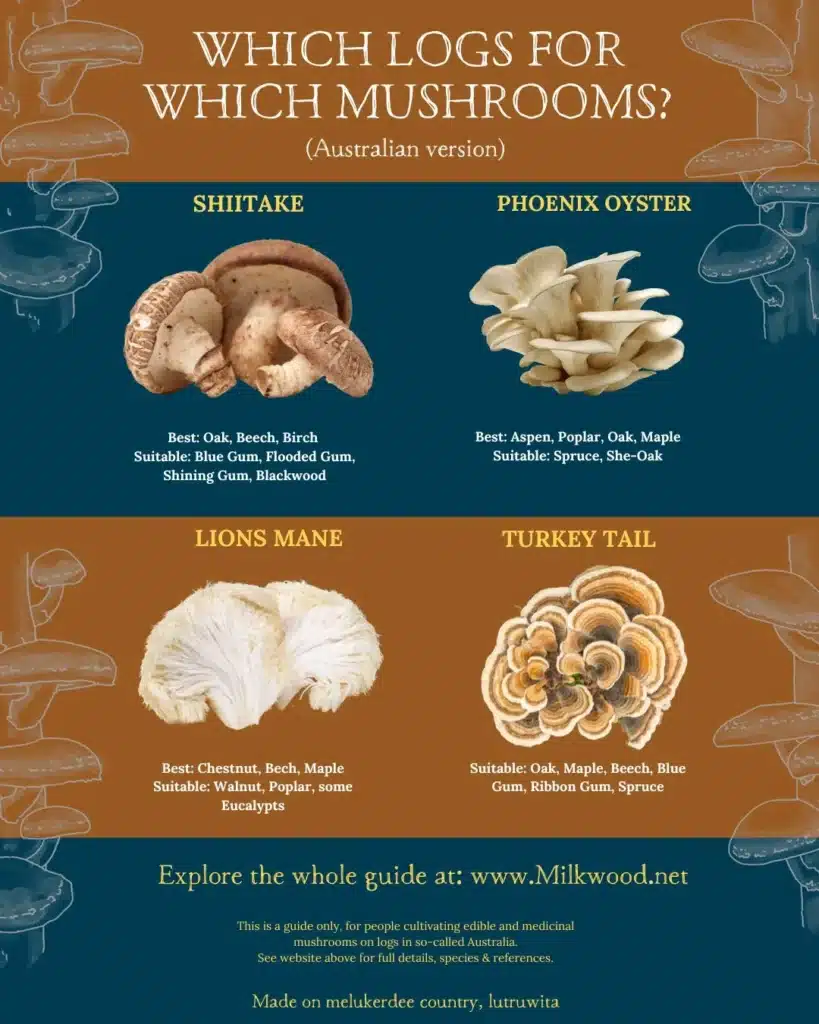
Sources for the chart:
- Bruhn, Mihail, Pickens. 2009. “Forest farming of shiitake mushrooms“
- Cornell Small Farms Program. 2020. “Best Management Practices for Log-Based Shiitake Cultivation“
- Przybylowicz, Donoghue. 1990. “Shiitake Growers Handbook: The Art and Science of Mushroom Cultivation .p40
- Paul Stamets. 1993. “Growing Gourmet and Medicinal Mushrooms“ .p263, 311, 318, 356, 390
- Parsuram Sharma-Luital. Rowan Reid. 2009. “Log Grown Shiitake Mushrooms. An Australian Growers Manual“ .p18
- Mushworld. 2004. “Mushroom Growers Handbook 1 Oyster Cultivation“
- Field & Forest Products. 2020. “Selecting Logs for Mushroom Growing“
- North Spore. 2023. “How to Grow Mushrooms on Logs, Pillars, and Stumps“
- Fungi Perfecti. 2021 – “Growing Plug Spawn for Logs and Stumps“
- Andrade, Calonego, Minhoni, Severo, Kopytowski Filho. 2007. “Evaluation of mycelial growth of shiitake strains, production in eucalyptus logs“
- Andrade, Minhoni, Sansigolo, Zied. 2009. ”Basic wood density of seven species and three clones of eucalyptus before and during shiitake cultivation“
- Tisdale, Miyasaka, Hemmes. 2006. “Cultivation of the oyster mushroom (Pleurotus ostreatus) on wood substrates in Hawaii.” – * Chips not Logs
- Bowers, Hight, Miller, Gaffke, Taylor. ”Use of nonnative, invasive tree logs for commercial mushroom production“ – * Only one year long
- Personal experience – Milkwood
Thanks to the growers above for sharing what they’re learned! And thanks to the fungi, and all the trees.

